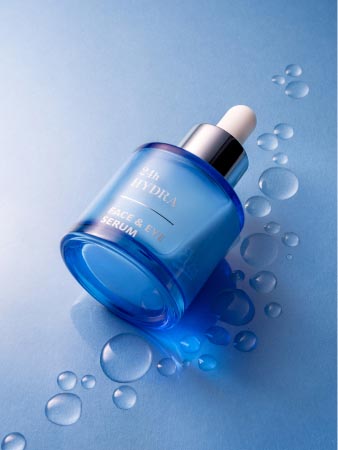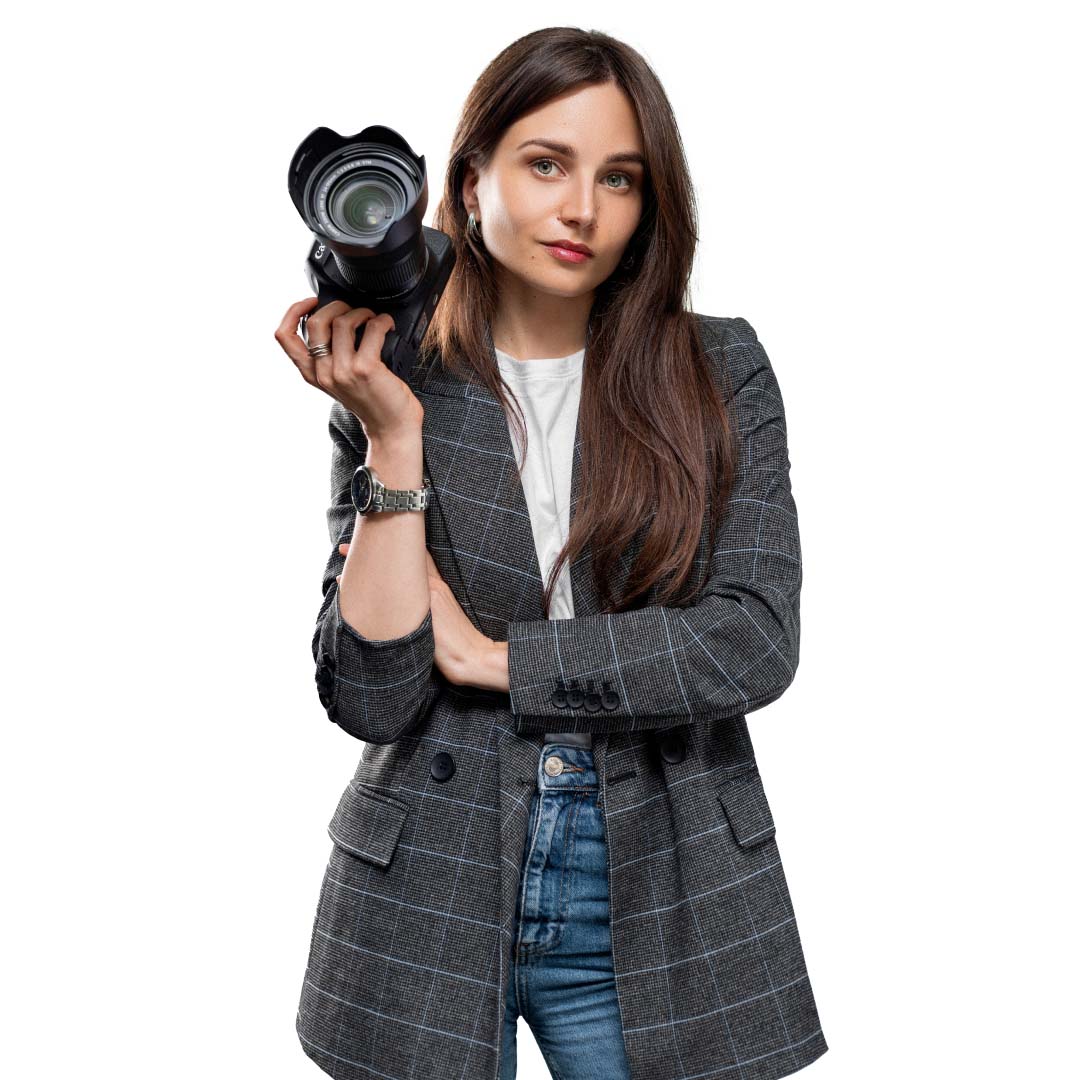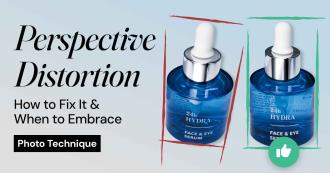
10 Ways to Photograph Your Cosmetic Products (and Which Ones Are Must-Haves)
There are countless ways to show off your beauty product — and today, we’re diving into the most effective and visually compelling ideas. Whether you're a product photographer building your portfolio or a brand preparing to launch a new line, this guide is for you.
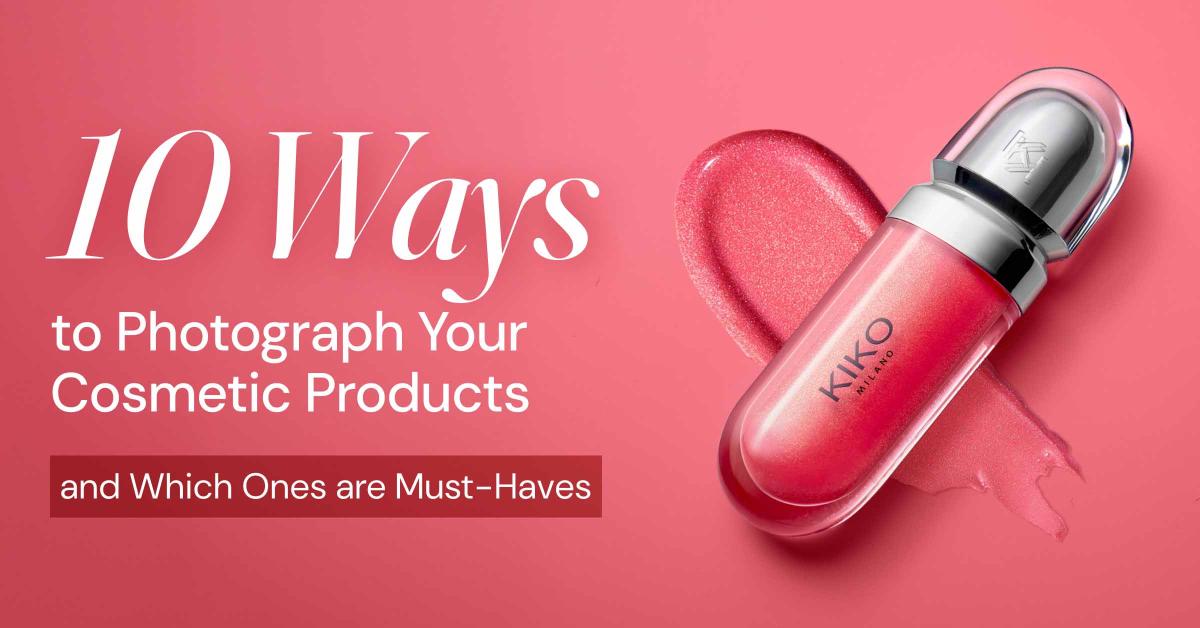
We’ll walk through different styles of shots — from essential packshots to editorial-style still lifes. And don’t worry: at the end, we’ll sum up the non-negotiable basics — perfect if you’re just starting out or working with a tighter budget.
Let’s begin.
1. The Product Itself — Solo, or with Its Packaging
This is your classic packshot. A clean, detailed photo of the product on a white background or neutral surface is the bare minimum for any online store or catalog. It’s professional, distraction-free, and puts the focus exactly where it belongs — on the product.
If your outer packaging is elegant, informative, or luxurious, showcase it too. Many commercial photographers create a second image where the product and its box are presented side-by-side — or blend both into one beautiful, balanced product photo. Think of it as the full outfit instead of just the shoes.
This type of image is a cornerstone of professional product photography, and essential for any brand.
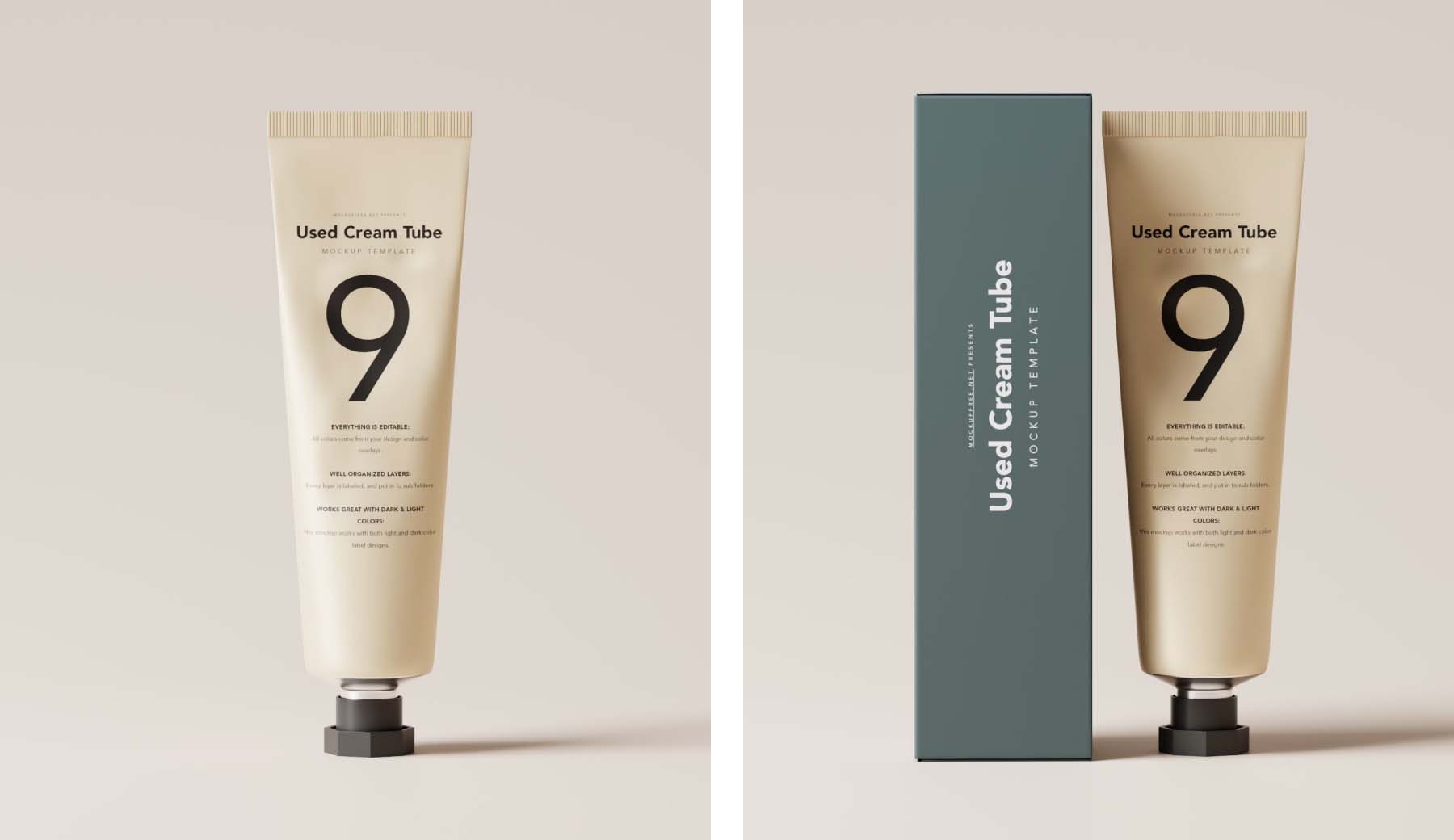
2. Swatch / Product Texture
Let’s answer the question first: what’s a swatch? It’s a visual sample of the product in use — either applied on the skin or spread out.
Swatches can show how lipstick, foundation, or eyeshadow looks on real skin. If you often browse cosmetics stores online, you’ve probably seen one very popular approach — showcasing the same swatch across a range of skin tones, especially in inclusive beauty lines. A classic example is eyeshadow applied on three or more arms of different skin colors, showing how universal the shade is.
Alternatively, swatches can be displayed as texture — think creamy balm, shimmering gloss, or velvety mask — spread out on a neutral background. It can appear as a single brush stroke or fill the entire frame in a macro close-up. To create these kinds of product photos, stylists and professional product photographers use tools ranging from palette knives to makeup spatulas — or even a good old spoon.
Swatches are incredibly important. Your customer can’t touch, smell, or test the product through a screen — so a well-executed swatch image bridges that sensory gap and builds trust.
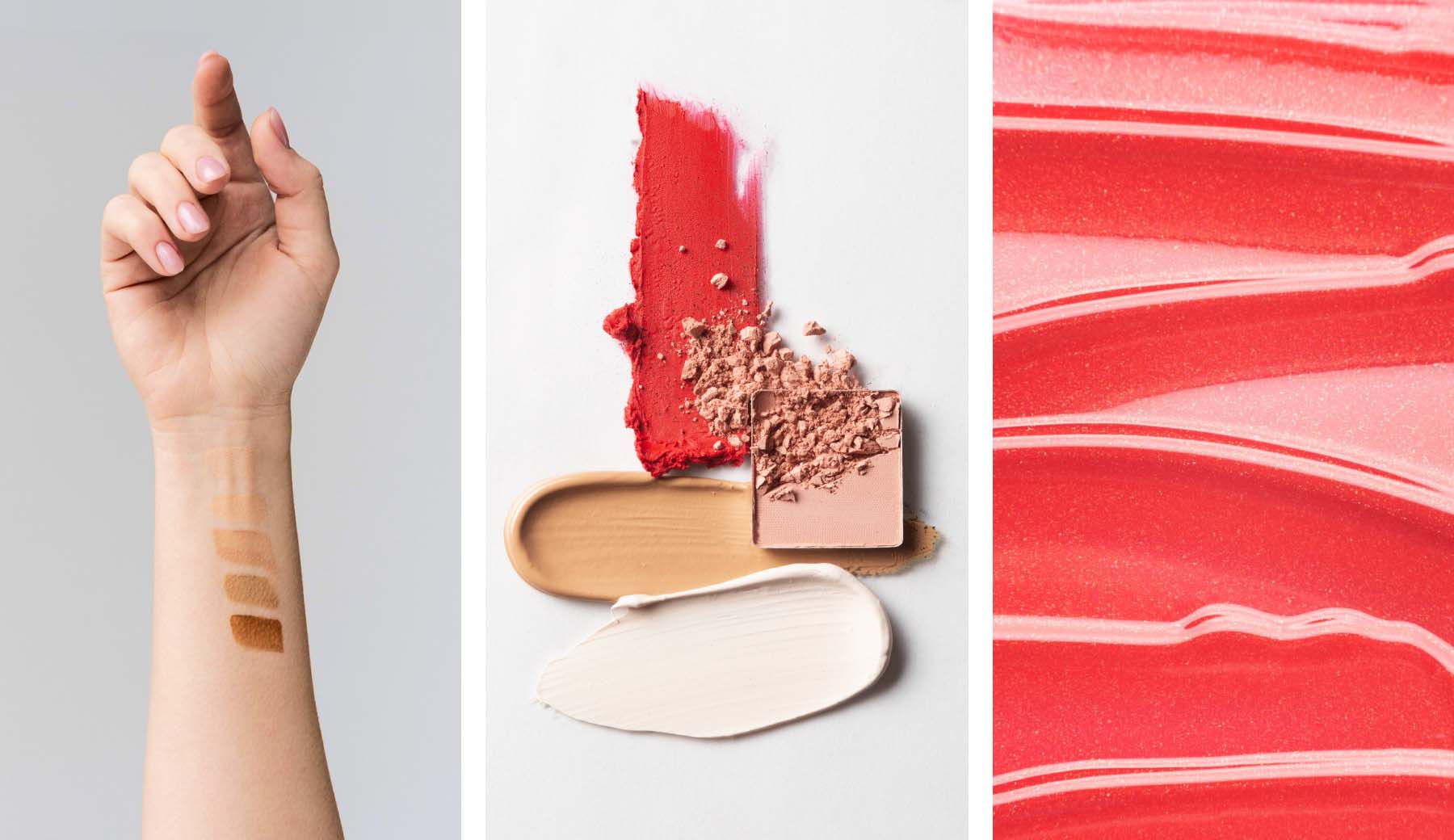
3. Product in a Colored or Styled Environment
Styled product photography is a type of photography where a product is shown as part of a visual concept that reflects a brand’s mood, style, or message. It’s not just about the look of the product, but the feelings and associations it creates.
Key features:
- Emotion-driven: The goal is to set a mood — luxury, comfort, freshness, boldness, etc.
- Styling and set design: Props, textures, colors, and lighting support the idea.
- Brand consistency: The visual style should match the brand identity.
- Creative freedom: Unlike plain catalog shots, complex and artistic compositions are welcome.
In short: a styled scene tells a story. And stories sell. And in the world of beauty product photography, storytelling is everything.
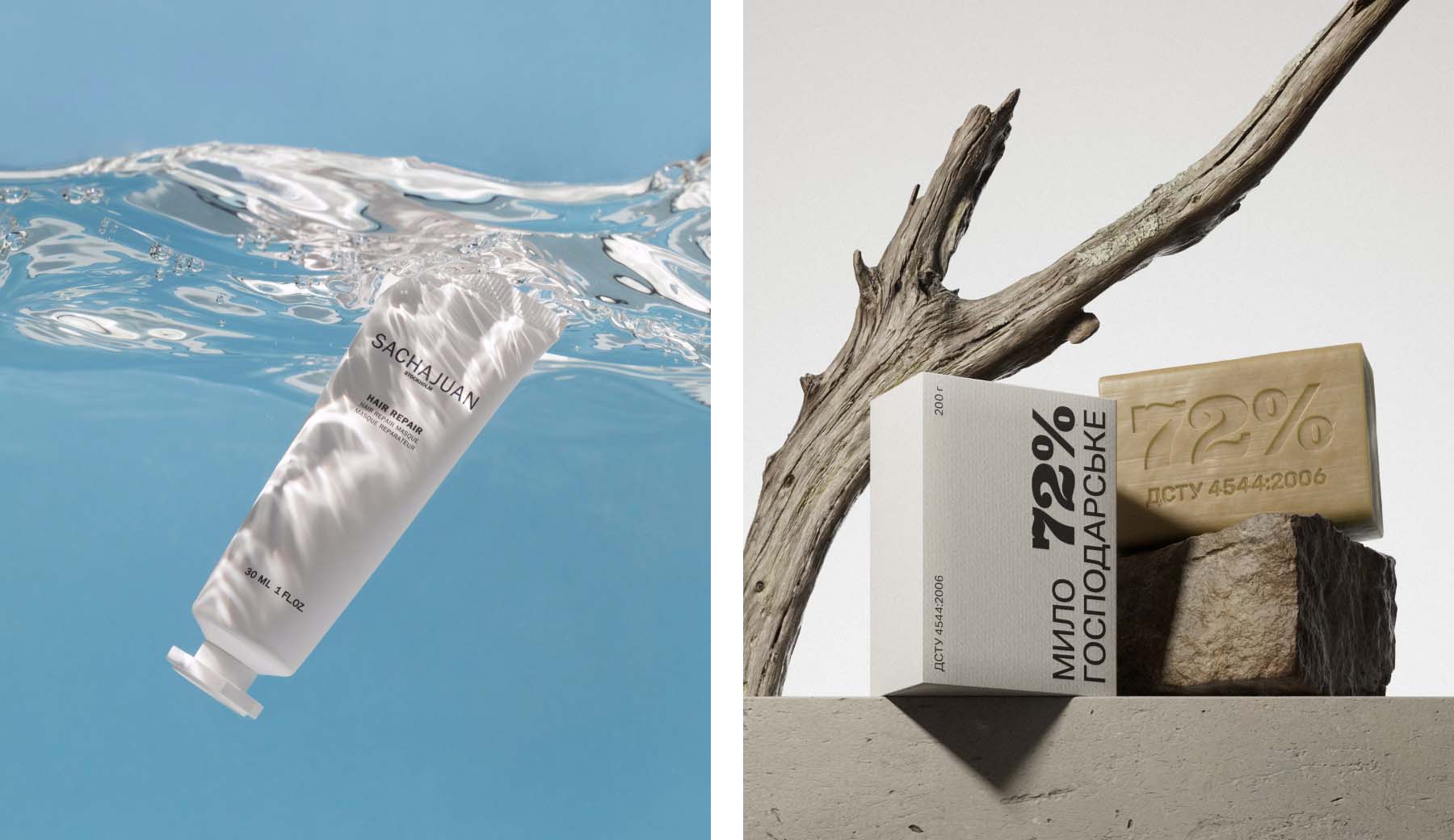
4. Model Close-Up: Hand or Skin
Sometimes, all you need is a hand. A clean shot where the product is held, swatched, or touched by a model adds a human element — without pulling attention away from the item itself.
This type of shot is especially effective for product photography that aims for a minimal, editorial feel. Hands add scale, texture, and realism while keeping the product as the central subject. Bonus: they work beautifully in both ad campaigns and e-commerce settings.
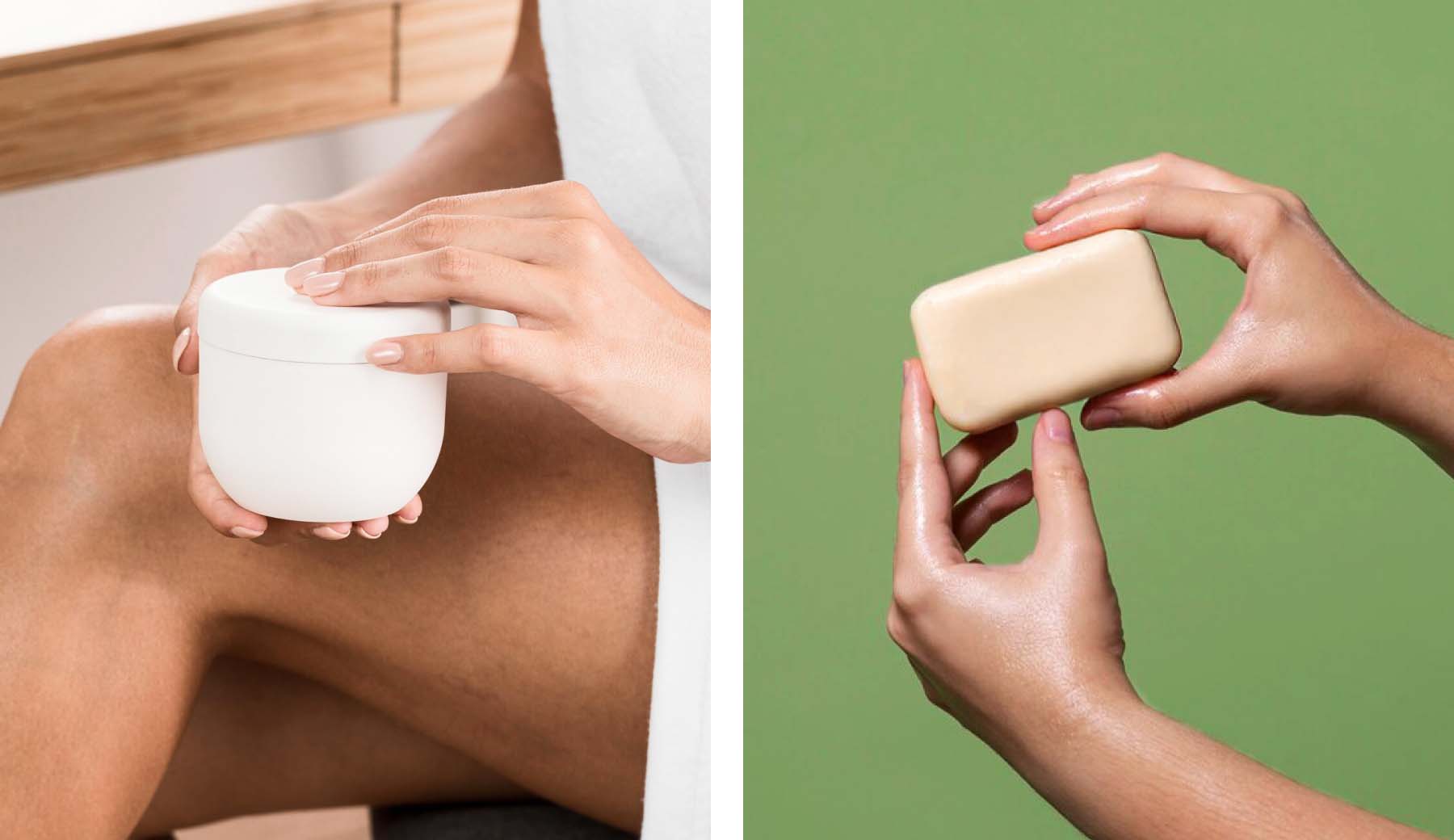
6. Model with Product (Face Visible)
If the previous point was about subtle human presence, this is all about storytelling. Showing a model using or engaging with the product — applying it, smiling with it, or even just holding it while looking into the camera — builds an emotional connection.
It also shows how the product fits into a lifestyle. A lipstick that looks amazing on a real person feels more compelling than one just resting on a surface.
These images work well in social campaigns, hero banners, and influencer-style content.

6. Lifestyle Setting
This is where product photography overlaps with interior design. Place the product in a realistic environment: a bathroom counter, bedside table, travel pouch, or open drawer. The goal? Make the customer feel like the product already belongs in their home.
One strong product photography trend in 2025 is the “shelfie” style — a curated setup that mimics a bathroom shelf. Interestingly, this idea was pioneered by legendary fashion photographer Irving Penn in a 1982 ad campaign for Clinique. The striking image featured translucent shelves glowing from behind, filled with carefully arranged products — and it marked the birth of a visual trope. Forty years later, the “shelfie” remains a go-to concept in the personal care and skincare industry, embraced by brands at every level, from glossy editorials to everyday marketplaces.
A well-executed lifestyle shot adds aspiration, warmth, and context.
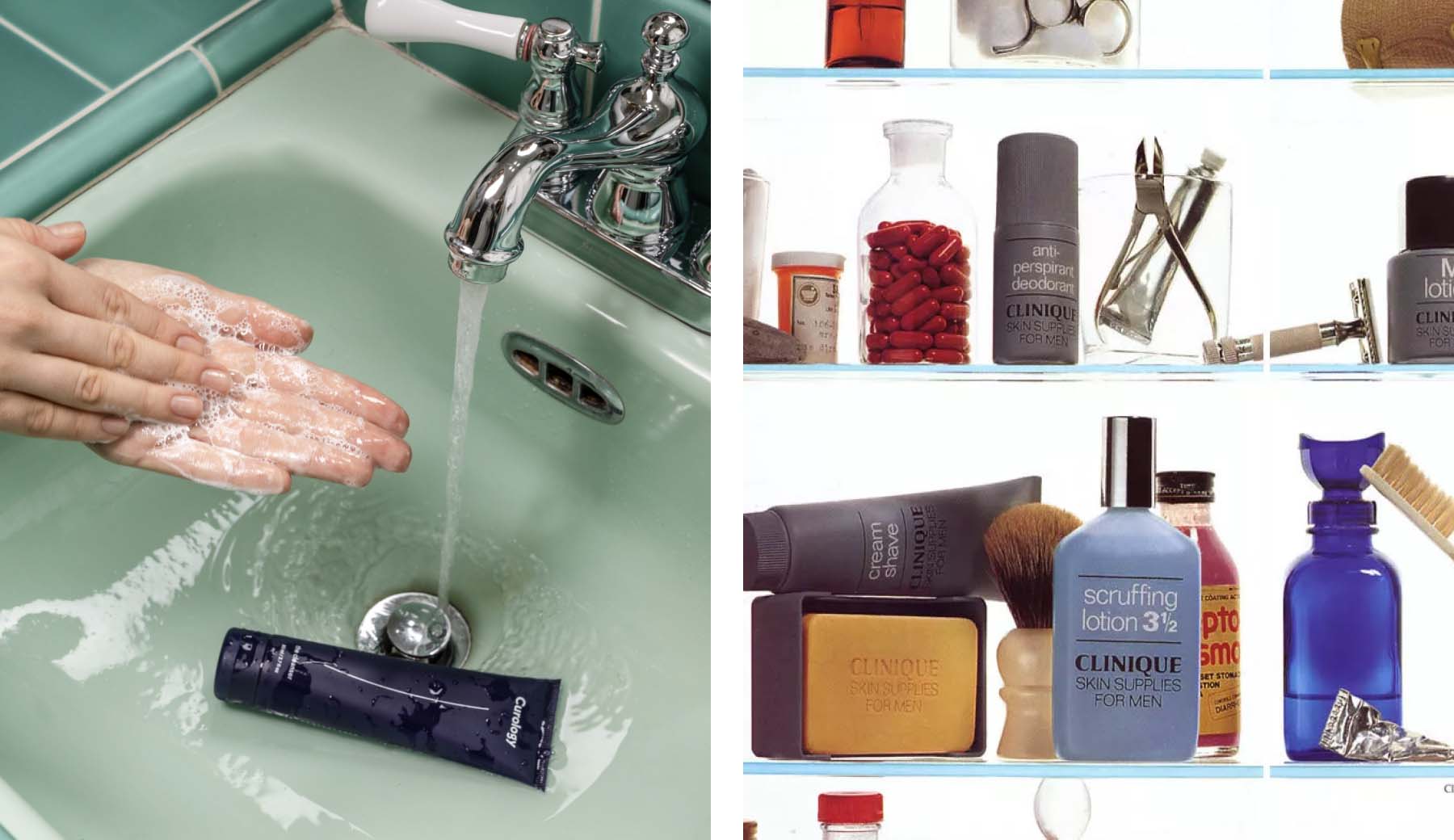
7. Group Shot
Got a set of products that belong together? Group shots are great for presenting collections — like a three-step skincare routine, a series of lip glosses, or seasonal bundles.
They help customers see the range and make upselling easier. When done creatively, they can also serve as stunning hero images for your brand.
Group shots can be arranged in a line, stacked playfully, or fanned out like a palette — showcasing the range in one clean composition.
Even if you have just one product — no worries. You can still create a group shot using multiple identical items to make the visual more dynamic. One popular style is the pattern shot — where several identical products are arranged in a grid, line, or scattered layout for visual impact.

8. Ingredients-Inspired Shot
Your ingredient list can become your set design. If your mask contains matcha, oats, and honey — include those in the photo. If your serum features rosehip oil and vitamin C — sliced citrus and rose petals are your styling friends.
This type of still life product photography is especially beloved by natural beauty and organic skincare brands. It tells the story of what’s inside, builds trust, and adds visual interest.
A skilled commercial photographer will balance the ingredients so the image feels curated — not chaotic.

9. Movement or Action Shot
Add life through motion: spray, pour, drizzle, smear. Action shots are a clever way to show how a product works — and make your visuals feel dynamic.
Popular examples? A mist being sprayed. A gel dripping from a dropper. Powder exploding like a cloud. These take a bit more setup and lighting finesse, but they’re oh-so worth it.
Done well, these product photos become true scroll-stoppers — and help elevate your beauty product image from good to unforgettable.
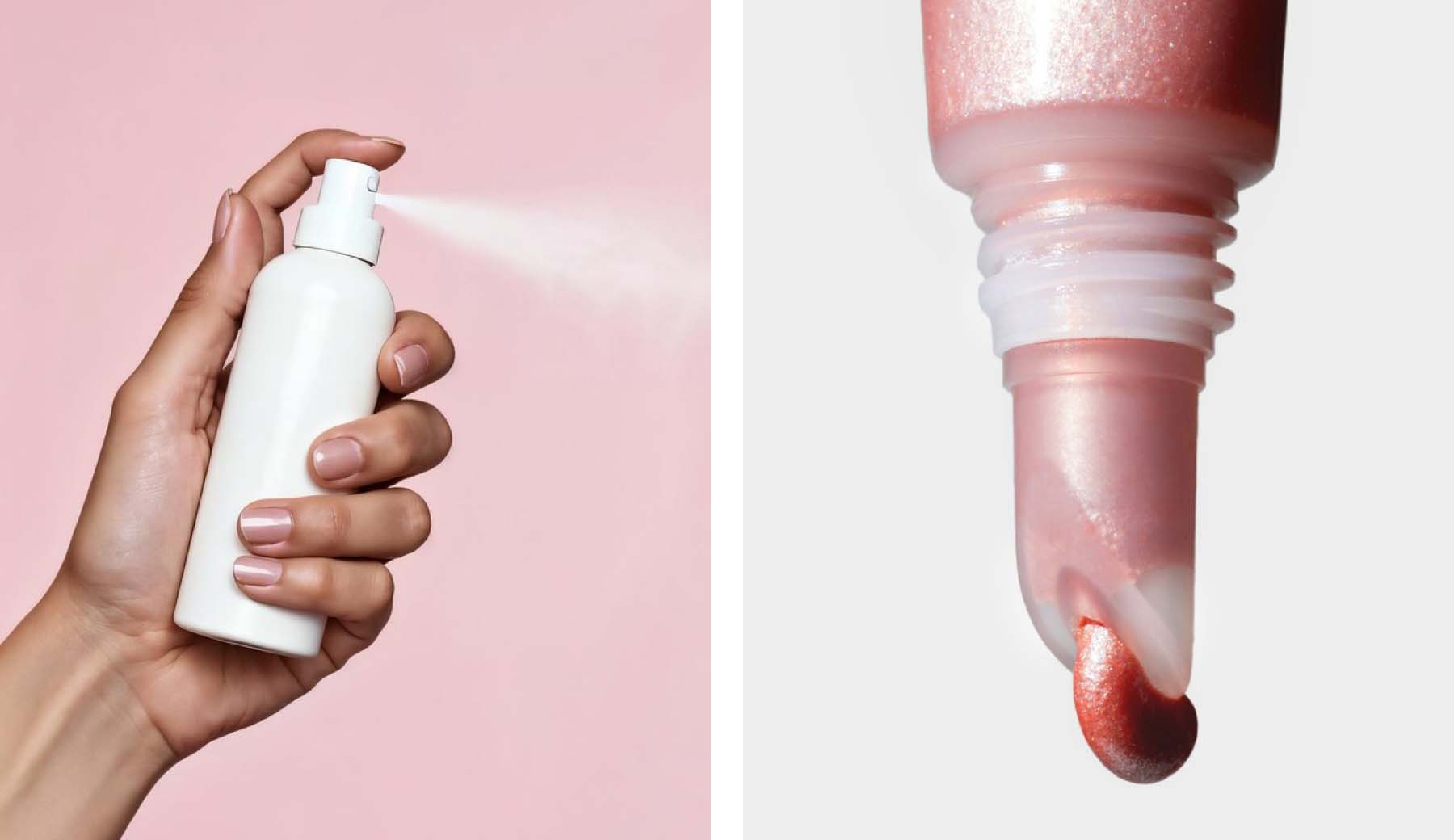
10. Seasonal or Thematic Setup
A product doesn’t live in a vacuum — so let your imagery reflect the time of year or a specific vibe.
Think: cozy knits and candles for winter skincare, citrus and seashells for summer SPF, soft romantic light for Valentine’s Day. These types of product photography images are perfect for newsletters, promotions, or seasonal launches.
They’re fun, flexible, and full of personality.
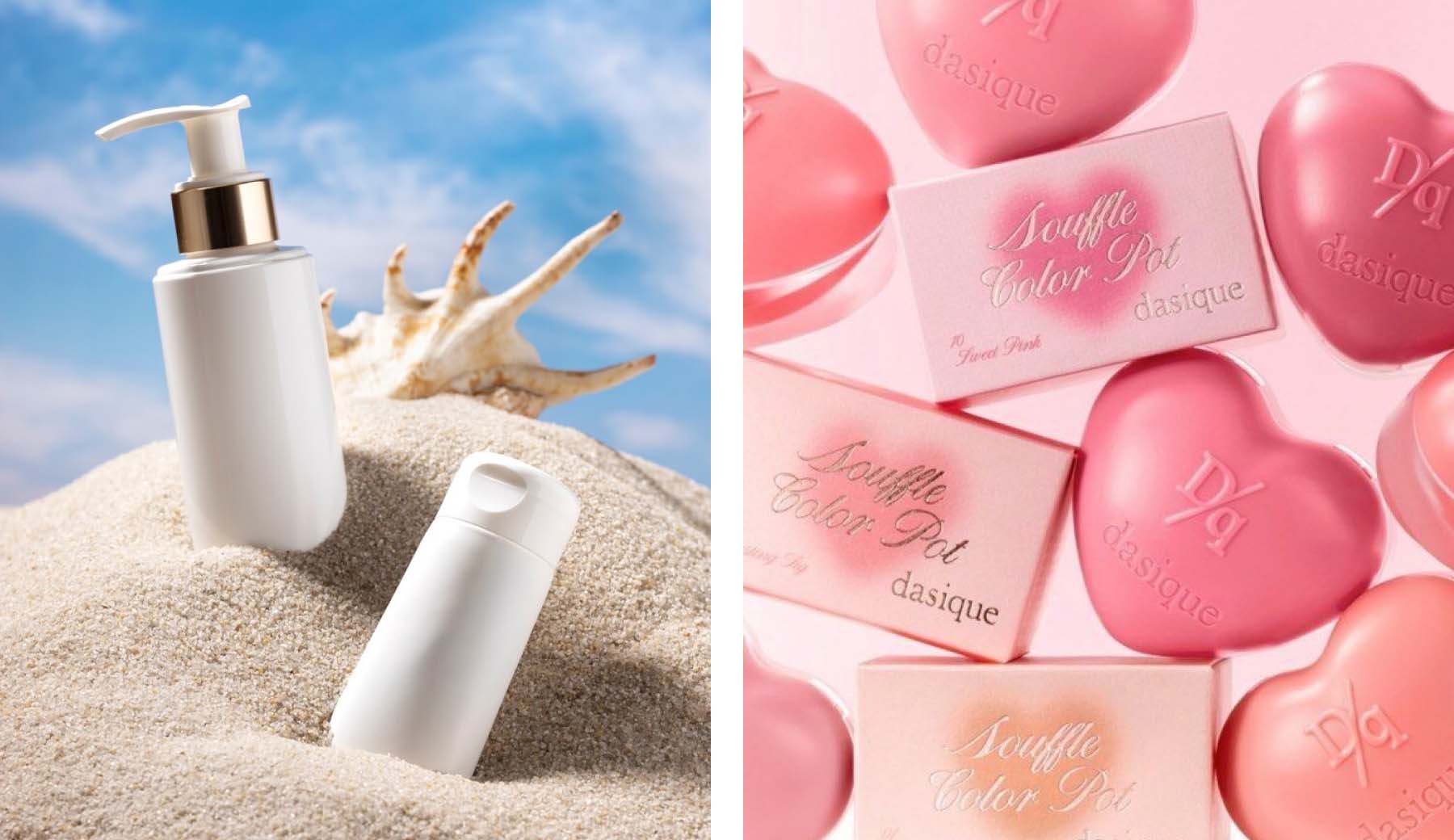
And now, the essentials…
Yes, there are a lot of creative options. But if you're working with a limited budget, or launching a product for the first time, focus on this short list of non-negotiables:
✅ White background product photo (with or without packaging)
✅ Swatch / texture shot
✅ Colored or or styled scene
✅ Model shot
✅ Group shot
These five give you a solid visual toolkit for e-commerce, social media, and ads — and help your brand look like a pro right from the start.
Final thoughts
This overview shows just how many ways there are to present a beauty product image — from standard packshots on a white background to more creative formats like styled environments, swatches, and ingredient-based still lifes. Each type of shot has a purpose: some are essential for e-commerce, others help communicate texture or create a specific mood.
Not every product needs every kind of photo. But knowing the available options makes it easier to plan a shoot based on your goals, whether you're launching a new line or updating existing visuals.
If you're working with a limited budget, start with the key images we listed at the end: they’ll cover your most important needs across online stores, social media, and promotional materials. And if you’re building a larger visual strategy, the other formats can add variety, interest, and depth.
In any case, good skincare and beauty product photography is about clarity, consistency, and making sure the product is shown in its best light.
Need help planning your shoot or want to create a full set of visuals for your brand?
Let’s talk and make your products shine ✨
